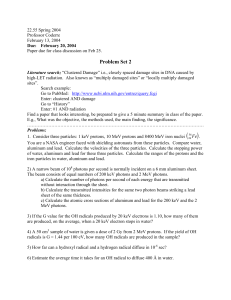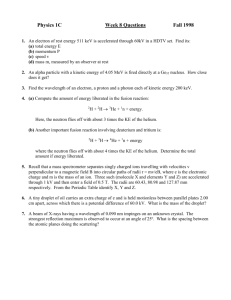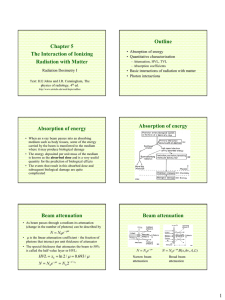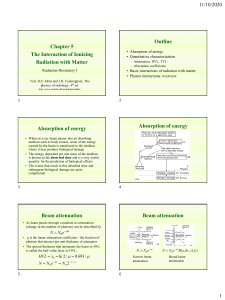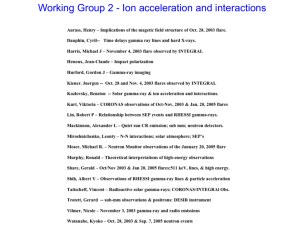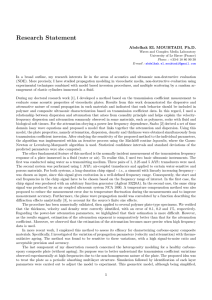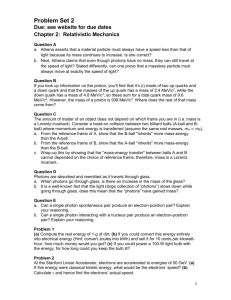Nuclear Physics Problem Set: Attenuation & Energy Loss
advertisement
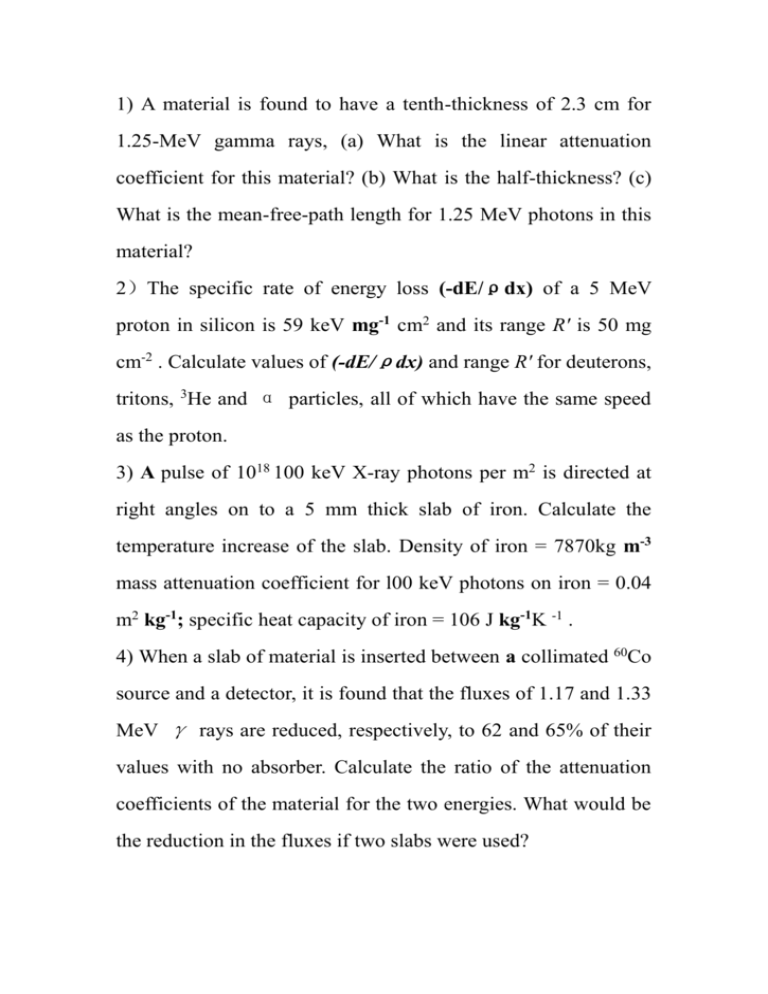
1) A material is found to have a tenth-thickness of 2.3 cm for 1.25-MeV gamma rays, (a) What is the linear attenuation coefficient for this material? (b) What is the half-thickness? (c) What is the mean-free-path length for 1.25 MeV photons in this material? 2)The specific rate of energy loss (-dE/ρdx) of a 5 MeV proton in silicon is 59 keV mg-1 cm2 and its range R' is 50 mg cm-2 . Calculate values of (-dE/ρdx) and range R' for deuterons, tritons, 3He and α particles, all of which have the same speed as the proton. 3) A pulse of 1018 100 keV X-ray photons per m2 is directed at right angles on to a 5 mm thick slab of iron. Calculate the temperature increase of the slab. Density of iron = 7870kg m-3 mass attenuation coefficient for l00 keV photons on iron = 0.04 m2 kg-1; specific heat capacity of iron = 106 J kg-1K -1 . 4) When a slab of material is inserted between a collimated 60Co source and a detector, it is found that the fluxes of 1.17 and 1.33 MeV γ rays are reduced, respectively, to 62 and 65% of their values with no absorber. Calculate the ratio of the attenuation coefficients of the material for the two energies. What would be the reduction in the fluxes if two slabs were used?
